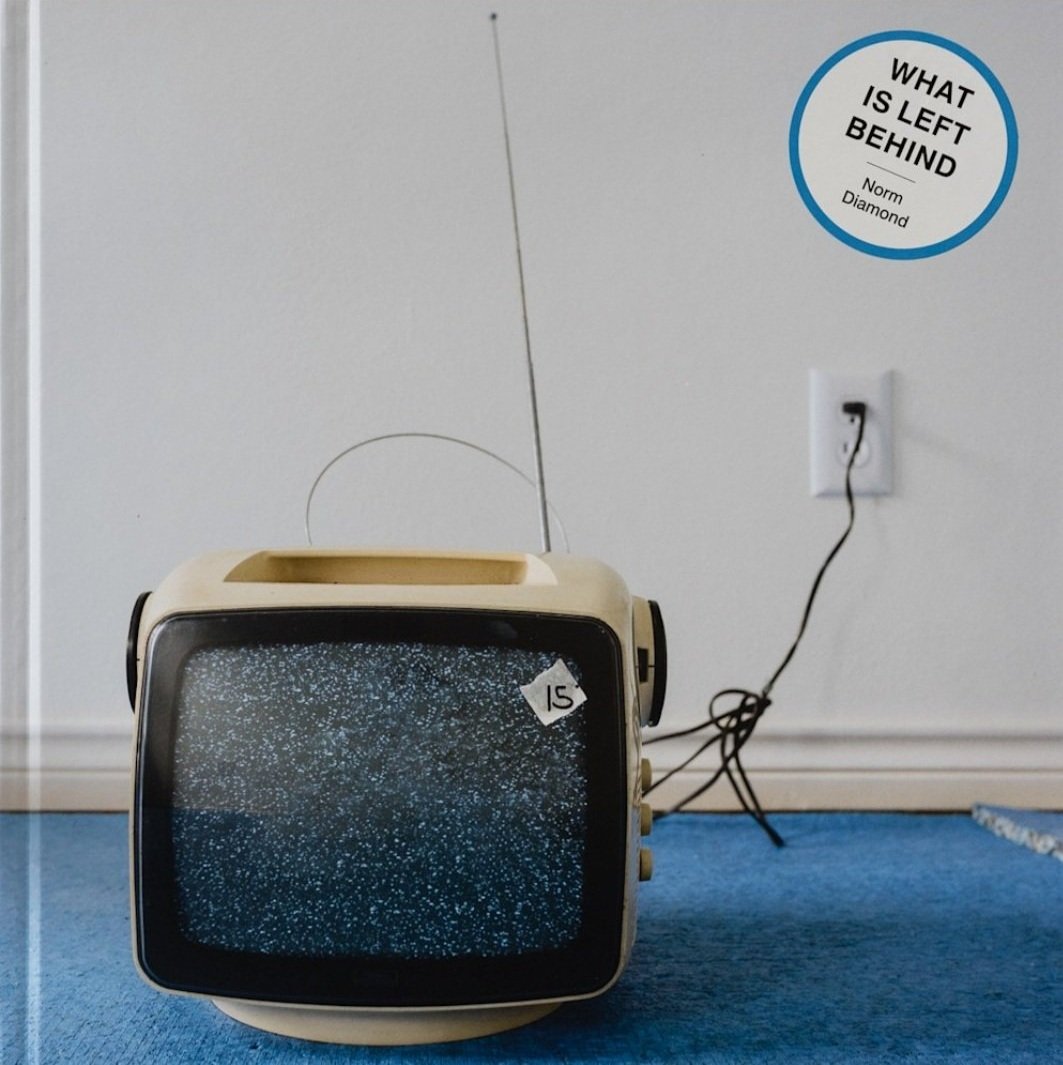
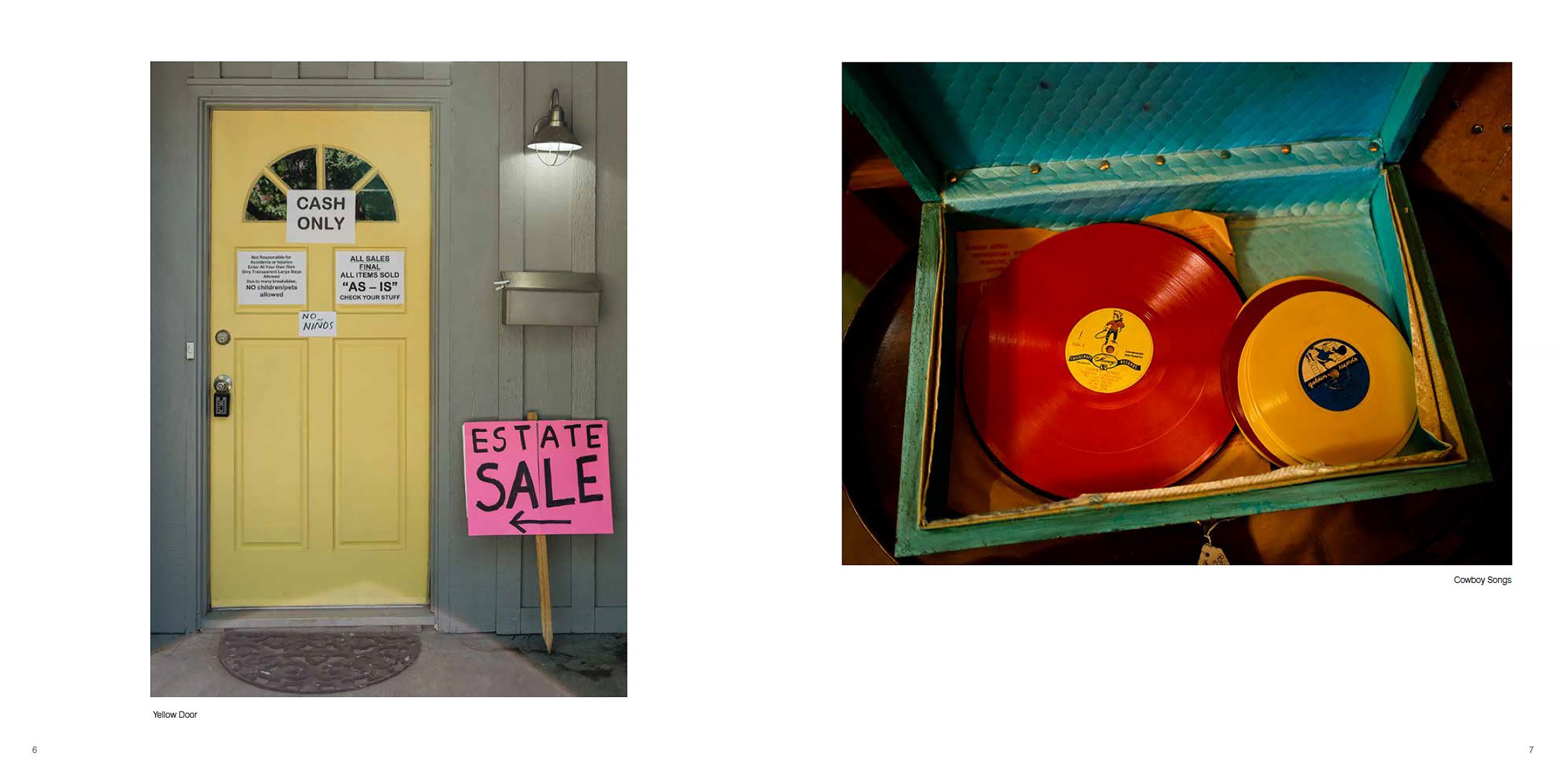
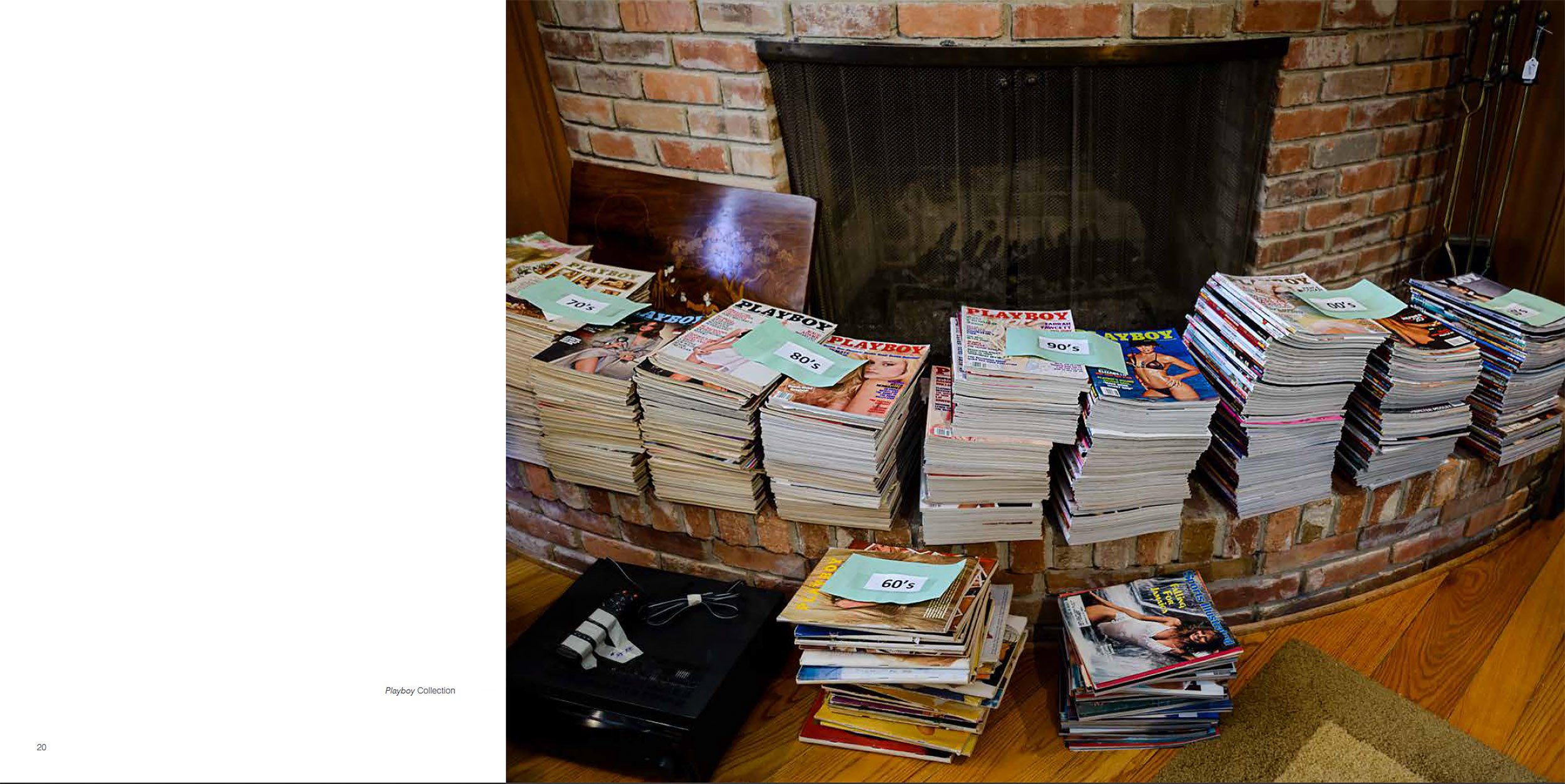
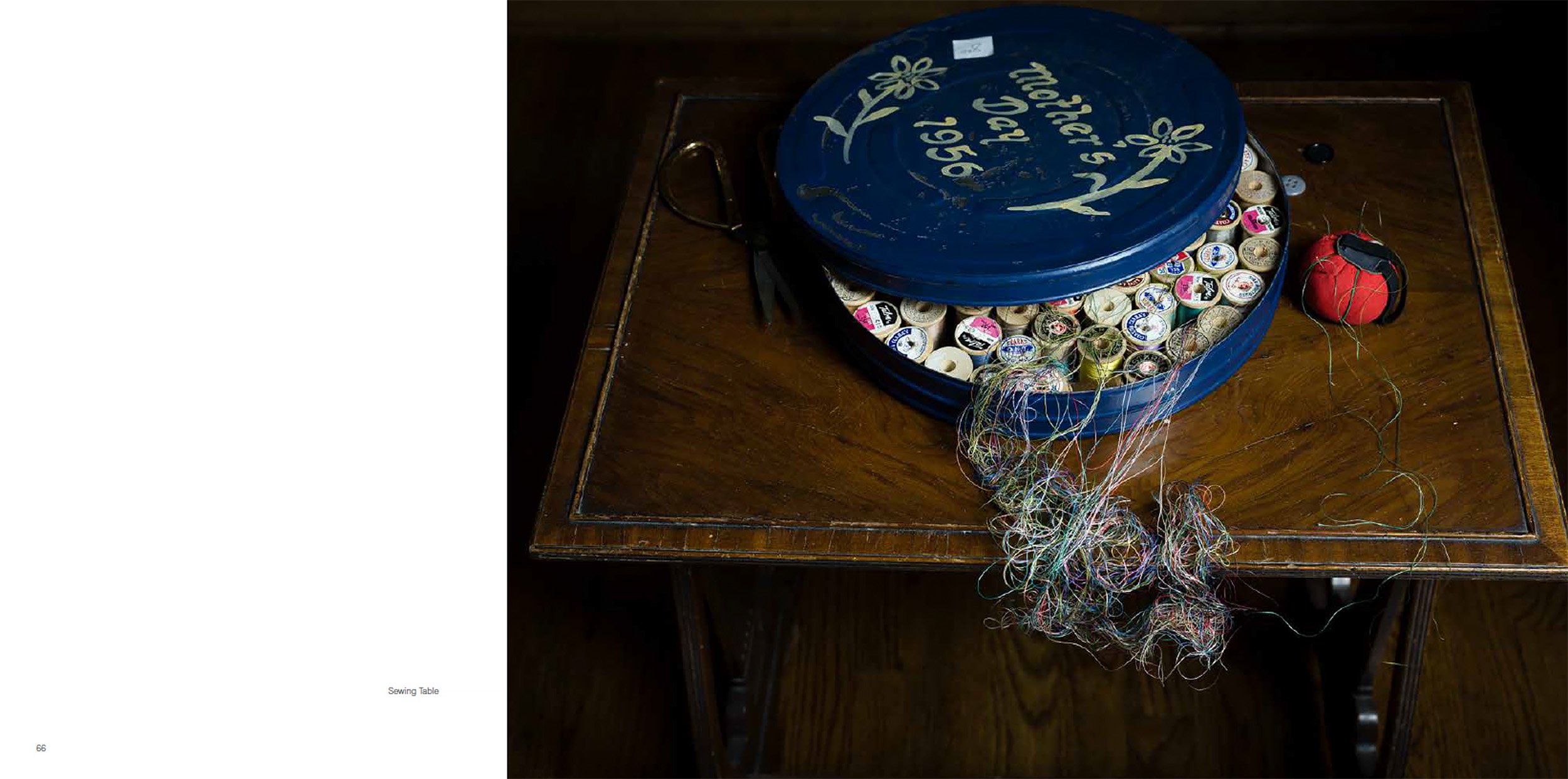

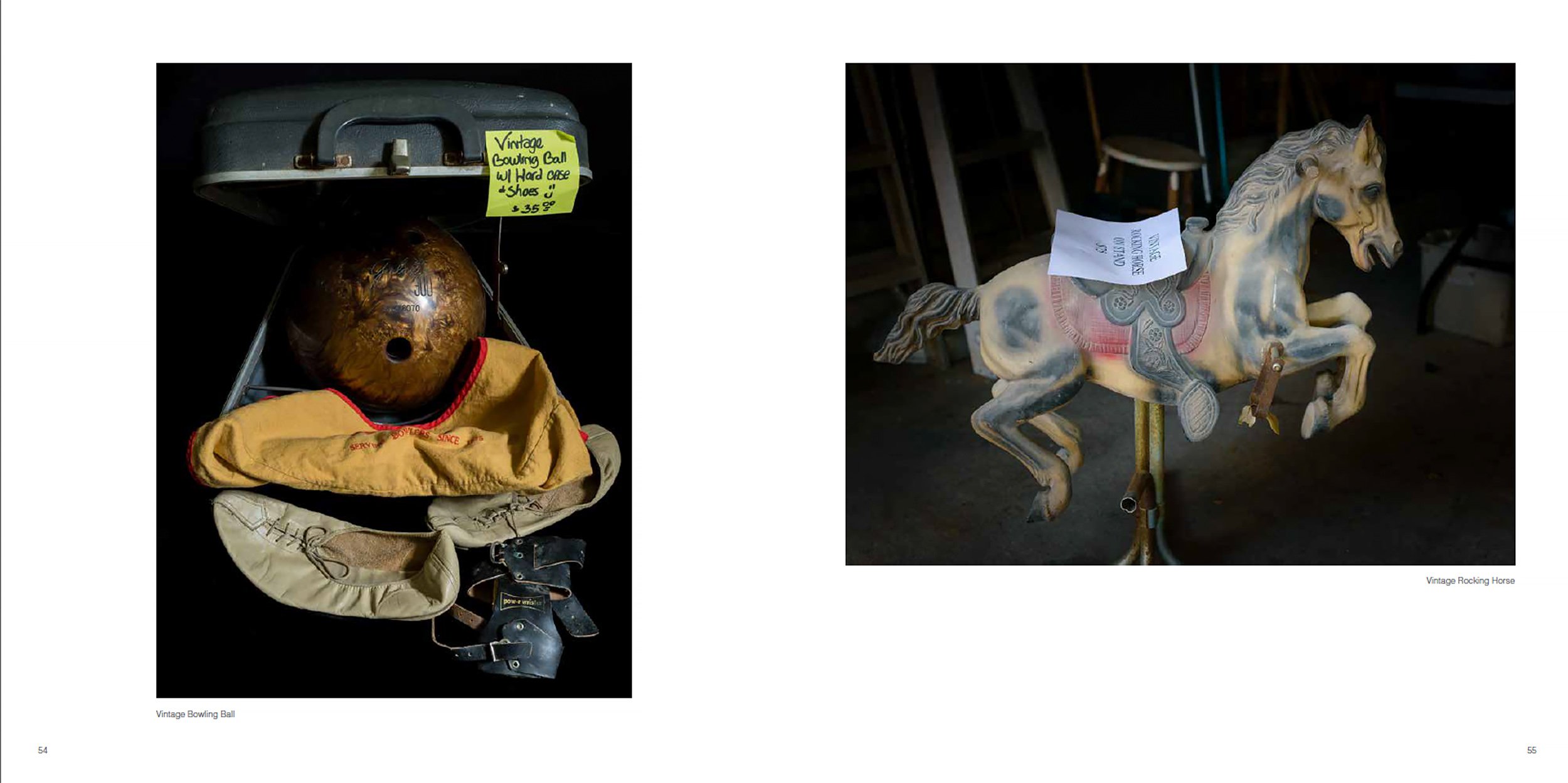
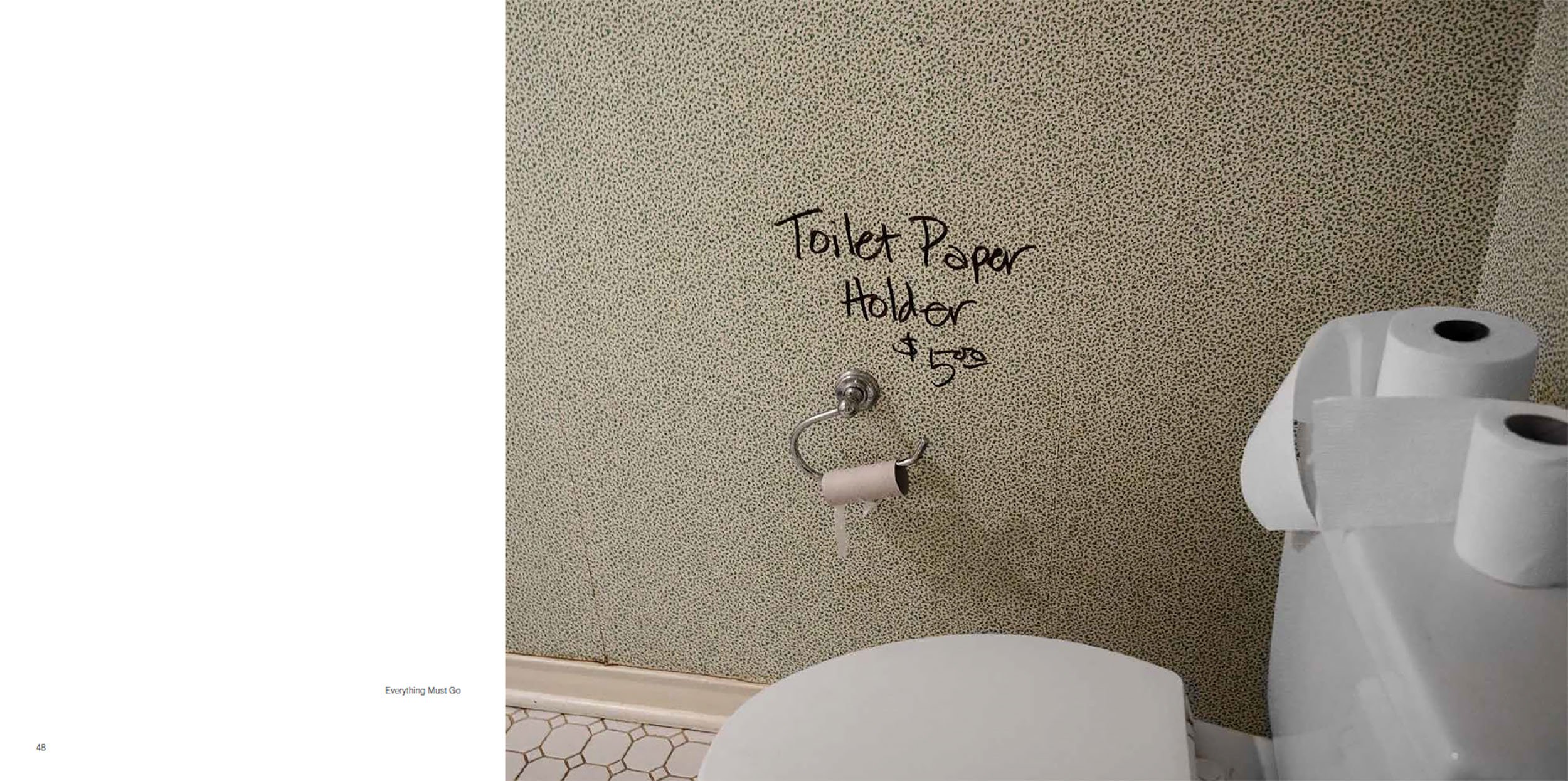
What is Left Behind: Stories from Estate Sales
Photos and Introduction by Norm Diamond
Essay by Kat Kiernan
112 pp., 67 color photos
Daylight Books publisher, 2016
“At the sales, Diamond looked for objects that communicated something about their owner’s life. Often, the belongings left over when a person died were testaments to loss, long illnesses, or the kind of poverty that conditions people to hold on to things, just in case they come in handy one day. Other times, what was left over was more sentimental. He saw a closet filled with Stetsons and bottles of Old Spice, a wig stored inside a box made for caramels, birth announcements for three children born between 1909 and 1913. Some days, he photographed those items as he found them. Other days, he bought items—always under $25— that caught his eye, and photographed them at his home in better light. He still has boxes of the stuff.
In one picture, a toilet paper holder, with a depleted cardboard roll still dangling off it, with its price written on the wall in Sharpie. Diamond’s title for the image? Everything Must Go.
Things, in the end, don’t make winners or losers, and they don’t save us from death. But they do tell stories about how we’ve lived.”
“ Some of Diamond’s photos capture similar collections: vinyl records, decades worth of old Playboy magazines, souvenir golf pencils, fishing flies. One shows a closet shelf piled two-deep with Western-style hats above a neat row of budget-minded men’s cologne bottles: “Stetsons and Old Spice.”
”It’s also a very emotional task,” David Ekerdt, a sociologist and gerontologist at the University of Kansas.... “It’s hard to quantify the attachment one has to certain possessions.”The likelihood that people will have an easy time relinquishing their accumulated possessions (stuff, junk), he added, steadily decreases after age 50.”
“Diamond’s photos of peoples’ stuff are haunting and intimate, and they support the idea that the things we accumulate during our time on Earth can in some way define us in death.”